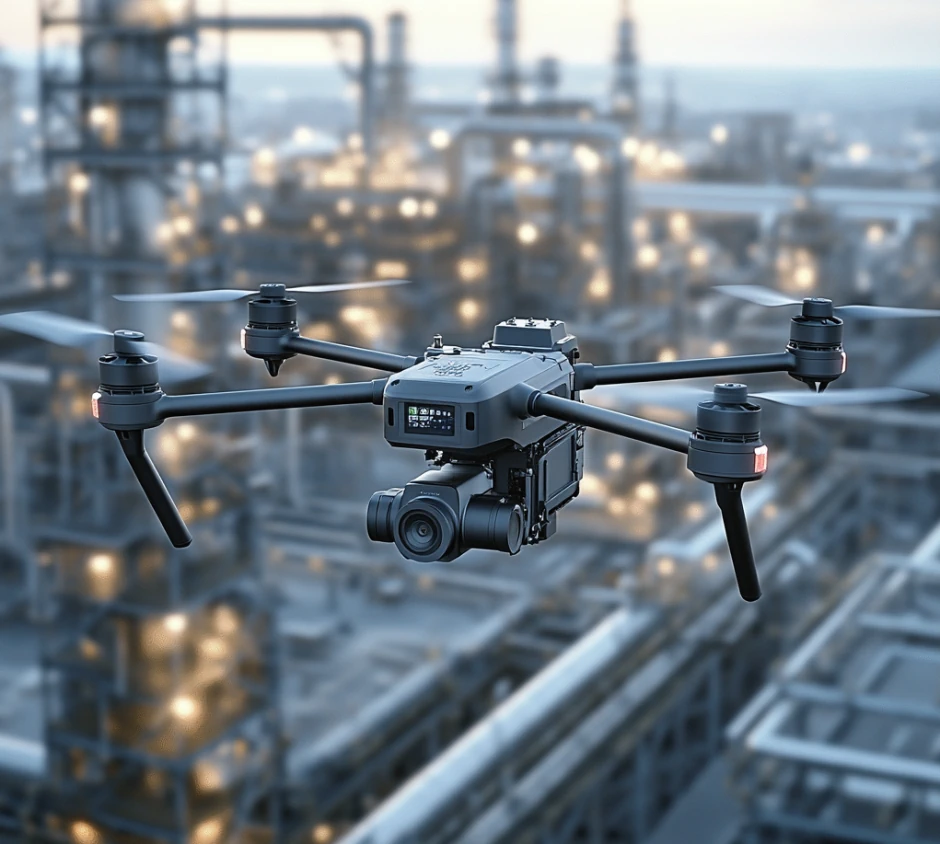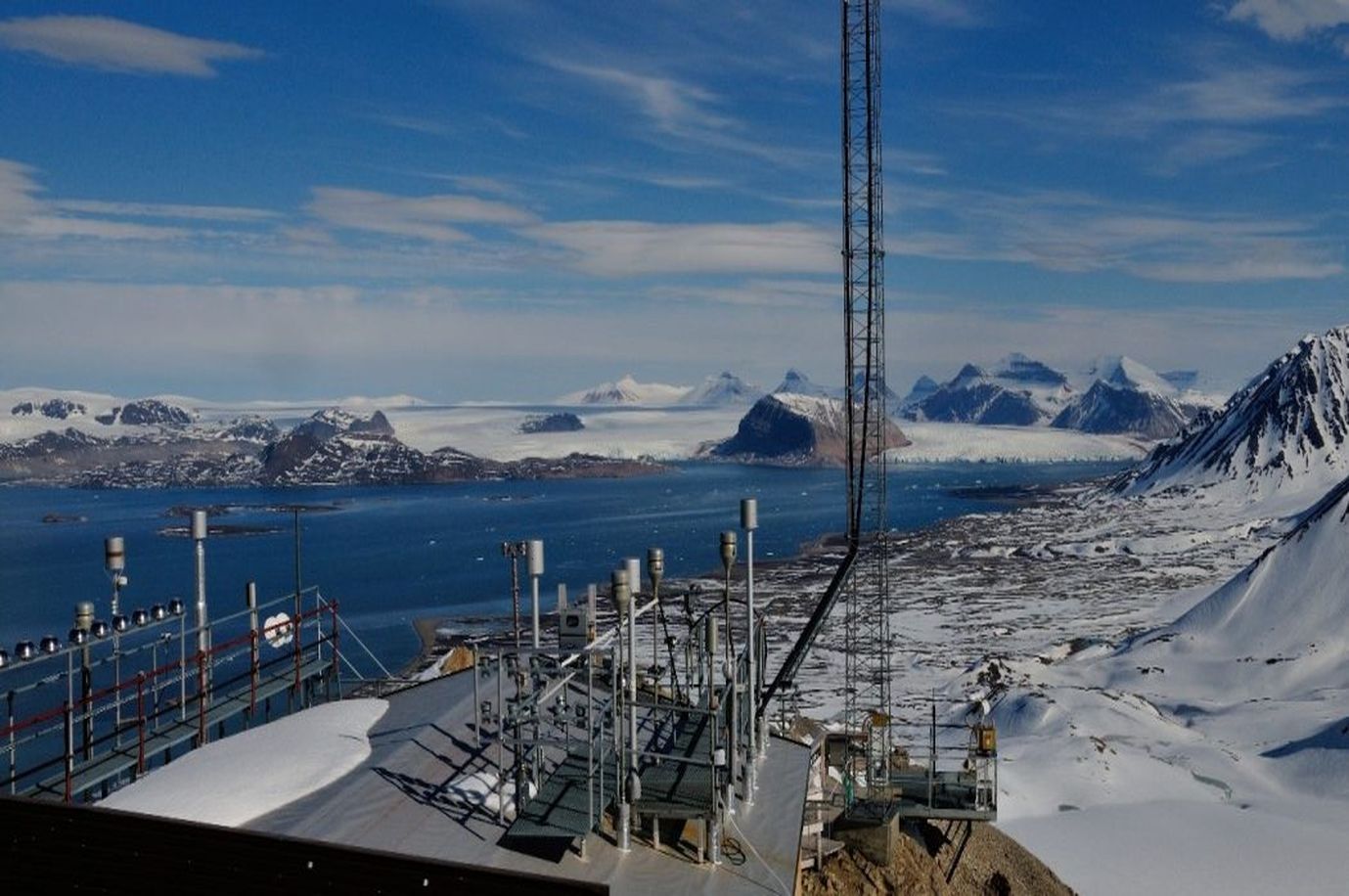In 2022, the rupture of the Nord Stream gas pipeline under the Baltic Sea led to one of the largest methane releases ever recorded: nearly 450,000 tons according to a recent study by the European Space Agency. In a pipeline, a tiny breach can mean several tons of gas released into the atmosphere each year. However, in the field, detection technologies remain rare, expensive, or difficult to deploy. This is the gap that the start-up Mirega aims to fill.
Founded in 2023, the young company, currently incubated at IMT Nord Europe, is designing a portable infrared sensor for measuring greenhouse gases directly in the field. It is particularly focused on detecting leaks in pipelines and monitoring emissions at industrial sites, two areas where there are currently no suitable solutions. The technological heart of the device is based on an innovation from fundamental research, which Mirega’s founder, Vincent Hardy, has successfully turned into a concrete application. The solution is lightweight, robust, and ultra-compact, meeting a critical need in the industry: the ability to take accurate measurements where existing devices are too bulky or static.
Gaining height to get started
It was high up in the Alps, with his skis on, that Vincent Hardy was hit hard by the reality of climate change. Season after season, this winter sports instructor saw the snow melt a little earlier, the glaciers recede, and the winters grow shorter. “It was this observation that motivated me to start a business with a positive environmental impact,” he explains. A career change? Not really. More like a new step in a journey marked by a taste for adventure. Because beneath his ski mask, he is also—and above all—an optical engineer observing the effects of global warming!
An entrepreneur at heart, Vincent Hardy left school to found his first company, Sinoptix, in China. Five years later, he returned to France, more specifically to Savoie, to pursue his childhood dream of becoming a ski instructor. But the desire to build projects never left him. In 2012, he joined ALPAO, a small company specializing in adaptive optics, which he eventually went on to manage. This experience in a cutting-edge company gave him time to develop an idea for a project directly related to his technological expertise, but with a broader purpose: the ecological transition.
At the intersection of research and entrepreneurship
For the entrepreneur, the challenge is clear: developing high-performance tools must not come at the expense of environmental requirements—the two must go hand in hand, without compromise. “I’m a geek, so what interests me most is technology,” he admits with a smile. “So I went to visit laboratories and SATTs [technology transfer acceleration companies], but I also studied market areas where there were environmental needs. And at some point, it all came together!”
It was at SATT Lutech that Vincent Hardy met two researchers from the École Normale Supérieure in Paris: Jakob Reichel and Romain Long. Specialists in quantum physics, they were working on the detection of cold atoms—a field requiring extreme precision. Their tool: a miniaturized Fabry-Perot interferometer, in other words two ultra-reflective mirrors positioned opposite each other, capable of creating a standing wave inside a beam of light. An innovation designed for fundamental experimentation, but which opens up possibilities far beyond the laboratory. “This invention also makes it possible to miniaturize gas analyzers,” explains Vincent Hardy.
The trio, joined by Pierre Mahiou, a former colleague from ALPAO, founded Mirega in February 2023. Their ambition is clear: to develop a miniature infrared gas analyzer that is 100 times smaller than conventional solutions while maintaining equivalent or even superior performance.
Precision down to the hair’s breadth
The technology used by Mirega is based on infrared spectroscopy. It involves sending invisible light onto a substance to cause its molecules to vibrate. Each type of chemical bond absorbs a specific frequency, which makes it possible to identify the gases present by analyzing the absorption spectrum. To ensure that the signal is readable, the light beam must interact with the material for a sufficiently long time. This is why what scientists call the “optical path” is so important: the longer the light travels through the sample, the stronger the signal.
In conventional devices, the signal intensity is enhanced by artificially increasing the path traveled by the light using optical cavities consisting of two mirrors facing each other. “To increase sensitivity, we use either a multi-pass cavity, where the light bounces several times before exiting, or a resonant cavity, like the one we are developing, where it forms a standing wave between the mirrors,” explains Vincent Hardy.
What Mirega changes is the scale. “Instead of manufacturing macroscopic mirrors measuring around ten centimeters, we machine the end of an optical fiber to obtain a mirror the size of a hair.” The result is an ultra-compact device that literally fits on a penny, with an optical path that can reach up to a hundred meters. “This allows for unparalleled compactness without any loss of performance. What’s more, it’s fiber-optic, so it’s much more resistant to vibrations.”
This miniaturization is not only a technological feat, it also represents an economic advantage. The optical components used come from the telecommunications sector, where manufacturing processes are already well established. “We are projecting a gross margin of over 70%,” says the founder. This means that large-scale production can be envisaged in the long term.
A mobile tool suitable for field measurements
The prototype developed by Mirega is capable of detecting all molecules with an infrared signature. However, the start-up has made a strategic decision to focus on two greenhouse gases (GHGs): carbon dioxide (CO₂) and methane, which has a global warming potential 84 times greater than CO₂ over a 20-year period. “Methane leaks are both an environmental issue and a huge economic loss, especially in a context where energy security has become a priority,” says Vincent Hardy.
Today, manufacturers have few effective means of detecting these leaks. Measurements are often taken by mass balance, based on incoming and outgoing volumes. This is an imprecise method that no longer meets the requirements of European regulations, which are becoming increasingly strict on emissions traceability. “What is needed are field measurements that can accurately survey an industrial site.” Hence the appeal of a mobile, sensitive, and compact analyzer.
Mirega is therefore targeting two key markets: leak detection in pipelines and GHG quantification at industrial sites. “These leaks not only pose safety risks, but also present opportunities for process optimization,” adds the entrepreneur. In other words, better detection means better production.
Between incubation, industrial validation, and scaling up
To refine its technology, Mirega has already benefited from the support of Natran (formerly GRTgaz), which enabled it to test its prototype in an industrial environment and validate its performance according to industry standards. The incubation program at IMT Nord Europe, which is currently underway, will provide the start-up with strategic support in its structuring, as well as privileged access to the school’s scientific expertise and laboratories, “which are benchmarks in the field; this is a real boost for us.”
For the time being, Mirega only markets its miniature mirrors, which are key components of the Fabry-Perot cavity, and production capacity is still limited. In May 2025, the start-up launched a €3 million fundraising campaign, including capital increases, grants, and loans. “These funds have a dual purpose: to industrialize the core of our technology, i.e., the optical cavity, and to finalize the R&D for our gas analyzer,” explains the founder. The goal is to take the technology from the lab to the field and, by 2026, offer a reliable, mobile solution that can be used with a drone to finally meet this major industrial challenge.







